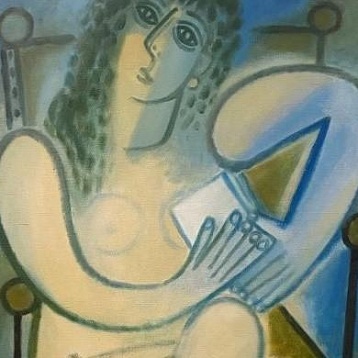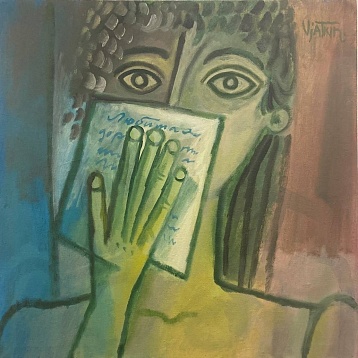



Outstanding painters Petr Zverkhovsky and Gleb Viatkin share a similar destiny – coming from different parts of the Soviet Union, they studied at the V. I. Mukhina Leningrad Higher College of Art and Design and later both settled in Volgograd, one in 1968 and the other in 1973. More importantly, they were extremely close in creative terms: they were linked by a tendency to experiment and the search for innovative form and close aesthetic ideals.
The poetic side of Zverkhovsky's (1942–2020) and Viatkin's (1934–2021) works is based on a deep assimilation and reworking of a wide range of artistic traditions, above all, the traditions of Russian and French modernism of the early 20th century. But reference to the past does not mean imitation. ‘Each epoch gives birth to samples that cannot be repeated and surpassed. It can only be repeated in another version, equally unique. Drawing inspiration from the past, one can only create one's own world’ – this is how Petr Zverhovsky reasoned.
Each artist creates his own special universe, which only partially resembles reality. In the works of each painter there is his own? Specifically his cast of characters. In Zverkhovsky's works these are mysterious ladies, sails, candles, melancholic desert landscapes, various flying creatures – from angels to balloons – all the attributes of romanticism, sometimes in its somewhat artless and literal understanding, which makes one think of naive art. In the space of Zverkhovsky's works there is always room for a miracle, his view of the world is full of sincere surprise and thirst for knowledge. In Viatkin's work, self-analysis appears, a desire to tell about one's own experiences. This is how the central image – the violin – emerges. It is both an autobiographical and a symbolic image, a sense of an object that conceals sound, music and art as such. The violin is incorporated into multi-figure scenes – Quartets – and becomes an important attribute of Viatkin's self-portraits. The figures of nude women are also partly similar to musical instruments in their plasticity. In the statics of their silhouettes there is a majestic and epic peace, hot sensuality, mystery and languid expectation of happiness.
The exhibition presents mainly works from the 2000–2010s, when the unique styles of both artists have finally formed and when the results of many years of creative endeavours appear in a distinct form to the uttermost.







